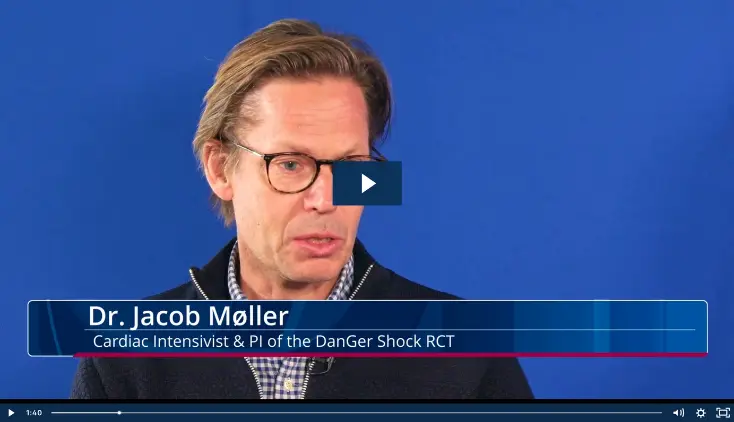Complete Revascularization, Protected PCI
York Data Analysis About Complete Revascularization With pVAD vs IABP: Part I vs Part II - A Comparison
In Part 1 of the pooled data analysis led by the York Health Economics Consortium, Vasileios Panoulas, MD, and colleagues examined data from PROTECT II, PROTECT III and RESTORE EF to explore the hypothesis that using a percutaneous LVAD, such as Impella®, during high-risk percutaneous coronary intervention (HRPCI) helps achieve more complete revascularization (CR) compared to HRPCI supported with an intra-aortic balloon pump (IABP).
Results showed a 40% greater reduction of residual SYNTAX score (rSS) post-PCI in patients treated with Impella compared to IABP (95% CI 27-50%, p<0.001). Defining complete revascularization (CR) as rSS<2, CR was achieved in 42.2% of Impella patients vs. 20.6% of IABP patients. Complete revascularization rates remained around 40% in Impella-supported patients with left ventricular ejection fraction (LVEF) below 20%; however, rates dropped to 15% in the IABP group. In addition, Dr. Panoulas reported that 70% of the patients in the Impella group achieved what is considered “acceptable results” with a residual SYNTAX score below 8, while only about 30% of patients in the IABP group achieved these results.
Dr. Panoulas concluded, “When taking study limitations into account, this pooled analysis showcases the potential of Impella to contribute to improved long-term patient outcomes by allowing a greater extent and quality of revascularization.”
Access Data Overview
You want to deep dive into York I and York II of the York data analysis? Find interviews, a side-by-side comparison and downloads here.
In Part 2 of the York data analysis, Dr. Panoulas and colleagues looked at data from PROTECT II and RESTORE EF to investigate the relationship between CR, New York Heart Association (NYHA) heart failure class and 90-day LVEF in patients undergoing HRPCI with either Impella or IABP. They found that baseline SYNTAX score, rSS and LVEF at baseline were significant predictors of NYHA class at 90 days post HRPCI with a single unit decrease in rSS increasing the odds of improved NYHA class for the patient at 90 days compared to baseline by 2.3% (95%CI 0.4-4.3%; p=0.021). Looking at only the PROTECT II patient group, postprocedural rSS was the only significant predictor of NYHA class at 90 days with every unit decrease in rSS increasing the odds of NYHA improvement by 2.6 (95%CI 0-5.7%; p=0.046). In addition, they found that baseline SYNTAX, rSS, and baseline LVEF significantly predicted EF at 90 days with a single unit decrease in rSS leading to an absolute higher LVEF at 90 days of 0.246%±0.05% (p<0.001). For the same level of revascularization, pLVAD-supported procedures resulted in an absolute higher LVEF of of 4.759±1.21% (p=0.001).
For Part 2, Dr. Panoulas stated, “These data further support the need for complete revascularization in this patient population and help make additional therapeutic decisions post-PCI.”
Key Points and Take Aways
- While Part 1 showed that Impella during HRPCI may help achieve more complete revascularization (CR) compared to IABP, Part 2 showed that complete revascularization, as measured by reduction in rSS after HRPCI, is significantly predictive of NYHA class improvement and EF gains at 90-day follow-up.
- Part 1 demonstrated a 40% relative reduction in rSS with Impella Protected PCI vs IABP with twice as many patients in the Impella group achieving complete revascularization.
- Part 2 demonstrated that baseline SYNTAX score, rSS and baseline LVEF were significant predictors of NYHA class and EF 90 days after HRPCI and Impella was shown to further increase LVEF at 90 days vs IABP.
- For Part 1, Dr. Panoulas stated, “When taking study limitations into account, this pooled analysis showcases the potential of Impella to contribute to improved long-term patient outcomes by allowing a greater extent and quality of revascularization.”
- For Part 2, Dr. Panoulas stated, “These data further support the need for complete revascularization in this patient population and help make additional therapeutic decisions post-PCI.”
NPS-3778


